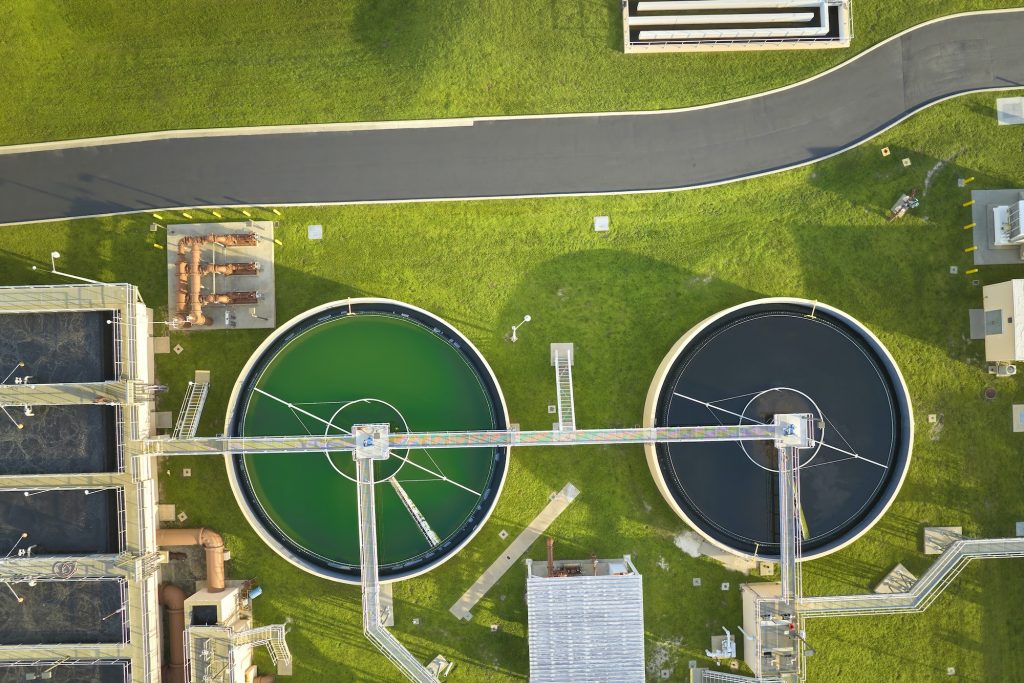Introduction to Microbes
Microbes, also known as microorganisms, are tiny living organisms that can only be seen under a microscope. They are found in almost every environment, including soil, water, and air. Microbes play a crucial role in maintaining the balance of the atmosphere.
There are several types of microbes, including bacteria, viruses, fungi, and protozoa. Each type of microbe has a specific function in the environment, and they all play a role in wastewater treatment.

Importance of Microbes in Wastewater Treatment
Wastewater treatment is the process of removing contaminants from wastewater before it is released into the environment. Microbes play a crucial role in this process by breaking down the organic matter in the wastewater into more straightforward, less harmful compounds.
The role of microbes in the nitrogen cycle is to convert nitrogen compounds from wastewater into nitrogen gas, which is then released into the atmosphere. This process helps to reduce the number of nitrogen compounds in the water, making it safe for release into the environment.
Similarly, the role of microbes in the phosphorus cycle is to convert phosphorus compounds from wastewater into forms that plants can reuse. This helps to reduce the amount of phosphorus in the water, which can cause eutrophication and harm aquatic life.
Advantages of using Microbes in Wastewater Treatment
Using microbes in wastewater treatment has several advantages, including cost-effectiveness, environmental benefits, and increased efficiency.
One of the main advantages of using microbes in wastewater treatment is that it is cost-effective. Microbes can be quickly grown and maintained, and they do not require expensive equipment or chemicals.
Another advantage of using microbes in wastewater treatment is the environmental benefits. Microbes reduce the number of pollutants in the water, making it safe for release into the environment. This helps to protect aquatic life and the surrounding ecosystem.
In addition, using microbes in wastewater treatment increases the efficiency of the treatment process. Microbes can break down a wide range of contaminants, making it possible to treat a variety of wastewater streams.
Methods of using Microbes in Wastewater Treatment
Several methods of using microbes in wastewater treatment include the activated sludge process, aerobic digestion, and anaerobic digestion.
The activated sludge process is a standard method of using microbes in wastewater treatment. In this process, wastewater is mixed with a population of microbes, which breaks down the wastewater’s organic matter. The mixture is then aerated to provide oxygen for the microbes to grow, and the resulting sludge is separated from the treated water.
Aerobic digestion is another method of using microbes in wastewater treatment. In this process, wastewater is mixed with oxygen and a population of microbes, which break down the organic matter in the wastewater. The mixture is then allowed to settle, and the resulting sludge is separated from the treated water.
Anaerobic digestion is a method of using microbes in wastewater treatment that takes place without oxygen. In this process, wastewater is mixed with a population of anaerobic microbes, which break down the organic matter in the wastewater. The resulting biogas can be used as an energy source, while the remaining sludge is separated from the treated water.
Challenges in using Microbes in Wastewater Treatment
Despite the many advantages of using microbes in wastewater treatment, several challenges must be overcome.
One of the main challenges in using microbes in wastewater treatment is controlling the populations of microbes. The people of microbes must be carefully managed to ensure they remain at optimal levels for efficient treatment.
Another challenge in using microbes in wastewater treatment is maintaining the optimal conditions for microbial growth. The conditions must be carefully controlled to ensure the microbes can grow and function effectively.
Finally, there is often competition between different microbial populations, which can lead to imbalances in the microbial communities and reduce the efficiency of the treatment process.
Conclusion
In conclusion, microbes play a crucial role in the treatment of wastewater. They can break down a wide range of contaminants, making it possible to treat a variety of wastewater streams. Using microbes in wastewater treatment has several advantages, including cost-effectiveness, environmental benefits, and increased efficiency. However, several challenges must be overcome, including controlling the populations of microbes, maintaining optimal conditions for microbial growth, and competition between microbial populations.
FAQs
- What are Microbes? Microbes, also known as microorganisms, are tiny living organisms that can only be seen under a microscope. They are found in almost every environment, including soil, water, and air.
- Why are Microbes important in wastewater treatment? Microbes play a crucial role in wastewater treatment by breaking down the organic matter into more straightforward, less harmful compounds.
- What are the advantages of using Microbes in wastewater treatment? The advantages of using microbes in wastewater treatment include cost-effectiveness, environmental benefits, and increased efficiency.
- What are the methods of using Microbes in wastewater treatment? The methods of using microbes in wastewater treatment include the activated sludge process, aerobic digestion, and anaerobic digestion.
- What are the challenges in using Microbes in wastewater treatment? The challenges in using microbes in wastewater treatment include controlling the populations of microbes, maintaining optimal conditions for microbial growth, and competition between microbial populations.